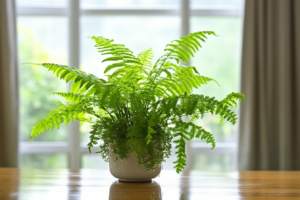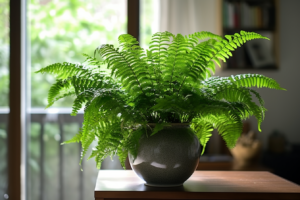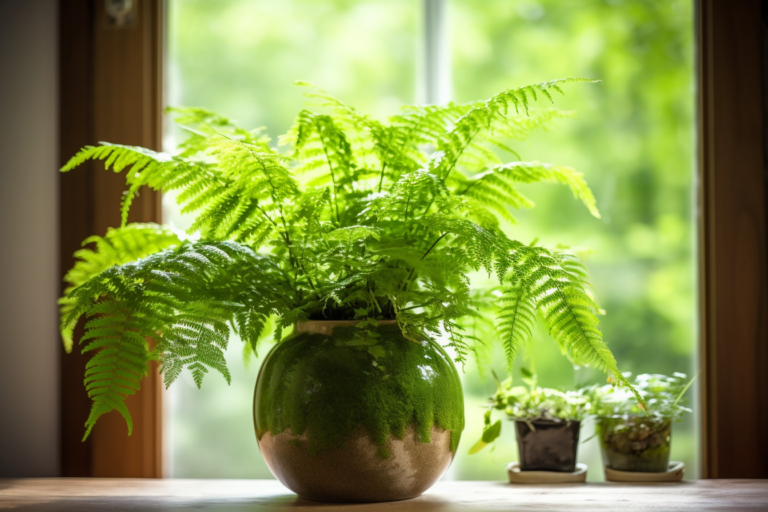We all know that ferns are beautiful plants that can bring a touch of elegance and nature to any indoor or outdoor space. But how often should we water these delicate plants to keep them healthy and thriving? In this comprehensive guide, we will explore the answer to this question and provide you with the essential information needed to properly care for your ferns.
Understanding Ferns
Ferns are unique plants that have been around for millions of years. They don’t produce seeds like most plants but reproduce through spores. Ferns come in a wide variety of sizes, shapes, and textures, making them a versatile choice for any garden or indoor space.
Some key characteristics of ferns include:
- Vascular plants with roots, stems, and leaves
- Over 10,000 species worldwide
- Thrive in a variety of environments, from tropical rainforests to arid deserts
- Require humidity and moist soil to thrive
Factors Influencing Watering Frequency
When it comes to watering ferns, several factors influence how often you should do it. These factors include:
- Species: Different fern species have different watering requirements. Some species may need more frequent watering, while others can go longer between waterings.
- Climate and Season: The climate and season can affect how often you need to water your ferns. Warmer and drier conditions will require more frequent watering, while cooler and wetter conditions may allow you to water less often.
- Location: Indoor ferns may need more frequent watering than outdoor ferns due to the controlled environment and lower humidity levels inside.
- Potting and Soil: The type of pot and soil you use can also impact watering frequency. Well-draining soil and pots with drainage holes help prevent overwatering.
Signs of Over-watering Ferns to Watch Out For
Over-watering your ferns can be just as harmful as under-watering them. While most ferns prefer consistently moist soil, too much water can lead to root rot and other issues. Here are some signs to watch out for that may indicate you’re over-watering your ferns:
- Yellowing leaves: If you notice that your fern’s leaves are turning yellow, it may be a sign that you’re over-watering. Excessive moisture can lead to root rot, which in turn can cause leaves to yellow and eventually die.
- Wilting: While wilting can be a sign of both over- and under-watering, if you notice that your fern’s soil is thoroughly wet and the plant still appears wilted, it’s likely being over-watered.
- Fungus growth: Over-watering can create a damp environment that’s perfect for fungal growth. If you notice any unusual growths on your fern’s leaves or soil, it could be a sign of over-watering.
- Foul odor: A musty or rotten smell coming from your fern’s soil is a sign that root rot has set in. This is often caused by over-watering and can be a serious issue if left untreated.
To avoid these issues, it’s important to make sure you’re not over-watering your ferns. Stick your finger into the soil to check for moisture before watering, and make sure your pots have good drainage to prevent water from pooling at the bottom. If you do notice any signs of over-watering, cut back on watering and allow the soil to dry out a bit before watering again. By paying attention to your ferns’ needs and adjusting your watering routine accordingly, you can help ensure that your plants stay healthy and beautiful.
Sure, I apologize for the mistake in my previous prompt. Here is the Markdown text for the section titled “Signs of Under-watering Ferns to Watch Out For”:
Signs of Under-watering Ferns to Watch Out For
As an avid fern enthusiast, I know that keeping these delicate plants healthy and vibrant requires paying attention to their watering needs. One of the most common mistakes people make when caring for ferns is under-watering them. In this section, I’ll share some of the signs that you may be under-watering your ferns so you can take action before it’s too late.
Yellowing or Brown Fronds
When ferns don’t get enough water, they begin to show signs of stress by turning yellow or brown. This usually happens on the lowest fronds first, but can spread up the plant if the under-watering continues. If you notice your fern’s fronds changing colors, it’s time to water it more frequently.
Dry Soil
If the top inch of soil in your fern’s pot feels dry to the touch, it’s a sign that your plant is not getting enough water. Ferns require consistently moist soil to thrive, so it’s important to check the soil frequently and water as needed.
Wilting Fronds
Another common sign of under-watering in ferns is wilting fronds. When ferns don’t get enough water, they can’t maintain their structure, causing their leaves to droop and wilt. If you notice this happening to your fern, give it a good drink of water and make sure to keep up with regular watering.
Stunted Growth
Under-watered ferns can also experience stunted growth as they struggle to get the necessary nutrients and hydration to grow. If your fern seems to be growing slowly or not at all, it may be a sign that it needs more water.
Indoor Ferns vs. Outdoor Ferns
Indoor and outdoor ferns have different watering needs. Let’s look at their differences:
How Often to Water Ferns Indoors
- Generally require more frequent watering
- Need higher humidity levels, which can be achieved with a humidifier, misting, or placing a tray of water near the plant
- Prefer well-draining soil and pots with drainage holes

How Often to Water Ferns Outdoors
- May need less frequent watering, depending on climate and rainfall
- Can benefit from mulching to retain moisture
- Require protection from harsh sunlight and wind
Fern Watering Techniques
Here are some effective techniques for watering your ferns:
- Soak and Drain: Soak the soil thoroughly and allow excess water to drain out of the pot.
- Misting: Mist the leaves of your ferns with water to increase humidity.
- Water Tray: Place a tray of water near your ferns to increase humidity. Ensure the bottom of the pot is not touching the water to avoid overwatering.
- Self-Watering Pots: Use self-watering pots to maintain consistent moisture levels in the soil.
Signs of Overwatering and Underwatering
It’s crucial to recognize the signs of overwatering and underwatering your ferns:
Overwatering
- Yellowing leaves
- Root rot
- Mold or fungus growth
- Wilting despite moist soil
Underwatering
- Dry, brittle fronds
- Browning leaf tips
- Curling or shriveling leaves
- Slow growth
Common Fern Species and Their Watering Needs
Here are some popular fern species and their general watering requirements:
- Boston Fern (Nephrolepis exaltata): Keep the soil consistently moist but not soggy. Water 2-3 times per week.
- Maidenhair Fern (Adiantum spp.): Maintain consistently moist soil. Water every 2-3 days.
- Staghorn Fern (Platycerium spp.): Allow the soil to dry out slightly between waterings. Water once a week.
- Bird’s Nest Fern (Asplenium nidus): Keep the soil evenly moist but not waterlogged. Water every 4-5 days.

Tips for Maintaining Healthy Ferns
Follow these tips to keep your ferns healthy and thriving:
- Monitor your ferns closely and adjust your watering routine as needed.
- Use well-draining soil and pots with drainage holes to prevent overwatering.
- Provide adequate humidity for indoor ferns.
- Protect outdoor ferns from harsh sunlight and wind.
- Fertilize your ferns with a balanced, water-soluble fertilizer during the growing season.
Other Environmental Factors to Consider When Watering Ferns
While knowing how often to water your ferns is crucial, there are other environmental factors that you should consider when it comes to watering. Here are some important factors to keep in mind:
Humidity
Ferns thrive in humid environments, so it’s important to keep the humidity levels up. If you live in a dry climate or keep your home particularly dry, you may need to take extra steps to increase humidity. A humidifier could be a great investment for your ferns.
Light
Ferns typically prefer indirect, filtered light. Direct sunlight can scorch the leaves, whereas too little light can cause the plant to wither. Observe your ferns and adjust the lighting as needed to ensure they’re getting just the right amount of light.
Temperature
Ferns typically do best in temperatures between 60-75°F (15.5-23.9°C). Sudden extremes in temperature can shock the plant and cause damage. If you notice your ferns are struggling, it could be due to fluctuations in temperature.
Soil Type and Drainage
Ferns thrive in soil that is rich in organic matter and well-draining. Clay soils can be too heavy and retain too much moisture, while sandy soils can be too loose and not retain enough moisture. The best soil for ferns is a well-draining, organic potting mix.
Pot Size
Ferns prefer to be a bit root-bound, so it’s best to choose a pot that is slightly smaller than what you may normally choose for other houseplants. Avoid over-potting your ferns to prevent water from pooling and causing root rot.
By taking into account these environmental factors, you can give your ferns the best chance for success and ensure they stay healthy and green.
FAQS
Can ferns survive without water for an extended period?
While some fern species can tolerate periods of drought, most require consistent moisture to thrive. Extended periods without water can lead to stress, slow growth, and even death.
How can I increase humidity for my indoor ferns?
You can increase humidity by misting the ferns, placing a tray of water near the plant, or using a humidifier.
Do ferns need direct sunlight?
Most ferns prefer indirect or filtered sunlight, as direct sunlight can cause leaf scorching.
How often should I fertilize my ferns?
Fertilize your ferns with a balanced, water-soluble fertilizer every 4-6 weeks during the growing season.
How do I know if my fern needs repotting?
If your fern's roots are growing out of the drainage holes or the plant appears crowded in its current pot, it's time to repot.


Thank you for sharing such useful tips on watering ferns. As someone who loves indoor plants, this was really helpful. I’ll be sure to keep your advice in mind when taking care of my ferns!